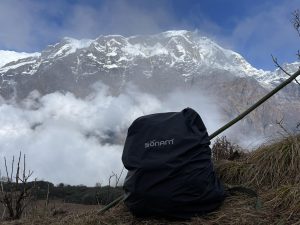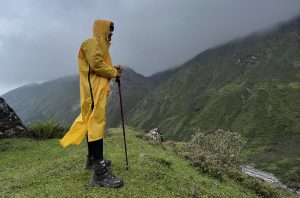Safety Preparation Tips for Trekking
Recently, the interest of the youth in trekking (hiking) is increasing. Away from the busy daily life, the number of people who go to observe the beauty of the mountains and Himalayas from up close, enjoying the fresh air and splashing the forest, ups and downs, has increased.
There are many people who go trekking during the time of Dashain because it is also a suitable season for visiting and it is a festive season with more days off from work.
But many people do not know how to prepare for trekking. Even the first-time visitors are confused.
We have to take care not only of clothes and accessories, but also of health and skin.
So, we have prepared this article for you about what you should pay attention to while trekking.
Always Choose the Best time to trek
Five months are suitable for trekking, especially in two seasons of the year. March, April, May and October, November. Among them, the best time to trek in Nepal is this festive season, generally October and November. The greatest Hindu festival ‘Dashain’ lies in these months plus the weather during these months are excellent for trekking. It is neither hot nor cold and there is very less probability of precipitation during the period.
Thus, choosing the ideal trekking season is the most essential preparation tips for trekking.
Research and Understand the Destination and Packing Essentials
First of all, one should understand the trekking destination and the geographical situation. After this, clothes should be prepared according to the place. Many people dress in haste without realizing it. In the same way they pack in bags. This makes walking difficult and makes the bag heavy.
Packing Smart: Creating a Checklist
Before going trekking, you should pack the necessary materials after arranging as much leisure as possible. For this, it is better to make a list of items on what you should carry on a trek so that no item is missed or repeated.
Since you have to carry a bag, carry only the essentials. The lighter the bag, the easier it is to move.

Layered Clothing for Varying Conditions
The clothes you wear should also be layered. Wear sweat-absorbing clothing when walking uphill and downhill. Nowadays, when trekking, you should wear a thermal set that sticks to the body and does not allow air to penetrate. Trekking trousers and sports t-shirts should be worn which are easy to walk.
Safety Clothing Essentials for High altitude
If you want to reach a high altitude, you should wear a down jacket and another thick jacket. If you want to reach the base camp of the mountains, you need more warm clothes. It should be worn with feather jackets that can be worn down to minus 10 degrees Celsius.
Staying Visible and Safe through Clothes
While trekking, wear light colored clothes as much as possible. It can also save you from accidents even if you are risk averse.

Accessories for Comfort and Safety
Weatherproof gloves should be worn depending on the altitude and weather. Along with this, a windproof scarf should be carried around the neck. Hat must be worn. Goggles should be worn for eye protection while trekking.
Selecting the Right Trekking Stick
Similarly, another important item for trekking is a trekking stick. It helps with walking. This rod can be made long or short according to the way. In general, there is no need to make the rod longer on the way uphill. But, on the descent, the stick should be made longer.
Trekking sticks are available in the market starting from 400 rupees. But sticks above 1000 rupees are good and can be used for next time trekking as well.
Choosing the right trekking shoes
Another thing to consider when trekking is footwear. When you have to walk in mountains, forests, rivers, and other places, you should buy shoes with a grip on the sole. It is non-slip. Now, Nepali brands are also producing shoes for trekking on a low budget. The price of these shoes starts at two to three thousand rupees.
Likewise, ‘Cramps’ which are worn on the soles of shoes for walking on dirt roads and snow should also be taken. It is like a small iron chain with spikes to prevent it from slipping. Similarly, you should wear comfortable and suitable trekking socks while walking.
Selecting the Appropriate Bag
Different types of bags are available in the market for packing goods. Generally, if you are going to a destination for more than 10 days, you should carry a 60 liter bag. Similarly, 50 liter bags for 7 days, 45 and 40 liter bags for 5 days are suitable.
Nutrition
You may not get food or a hotel while trekking. Dry fruits should be carried for such times. There is also a trekking-bar in the market with various kinds of food. Nuts like almonds, chocolate, cashew nuts are added to it.
Health and Acclimatization
One should take information about health problems while trekking long distances. If you go to the Himalayan region, you may encounter altitude sickness. Necessary medicine should be taken for this. After reaching 2500 meters above, you have to climb only 400 meters daily. If you walk too much at once, not only will you get tired, but it can also cause health problems.
Buying all these things mentioned above together for trekking can cost at least 15 thousand rupees.
Scheduling and Staying Hydrated
Scheduling is one of the most convenient preparation tips for trekking as you should reach your destination by walking. Usually you have to walk from 7 am and must reach the destination by 3 pm. Meanwhile, drink at least four liters of water daily. Due to not drinking water on time, many people have health problems during trekking. Therefore, water and soup should be drunk regularly. It benefits the body and adds energy to the walk.
Protecting Your Skin
Skin should also be taken care of while trekking. The higher you go, the stronger the sun’s rays, the more itchy and windy. So don’t skip the sunscreen cream. Must carry suitable gel, lotion, cream etc.
A sunscreen of at least SPF 50 or higher is required. It should be applied every 2/3 hours as much as possible, when sweat washes off and wipes off. Moisturizer should also be used to avoid breakouts. The face is protected by washing the face with facewash, applying moisturizer and applying sunscreen.
Hiring a Guide and Porter
A guide and porter can also be taken while trekking. Having a guide makes it easy from the beginning to the end of the destination.
To sum up, consider the following preparation tips for trekking:
- Always choose the best time to trek
- Pack according to the trek destination.
- Pack smart, create a checklist.
- Choose lighter clothes that makes walking easy. Also, clothes should be multi layered suitable for every kind of weather.
- Select the right trekking shoes, sticks and bags.
- Carry dry fruits with you.
- Keep your body hydrated.
- Carry Sunscreen.
- Hire a guide and porter if possible.
